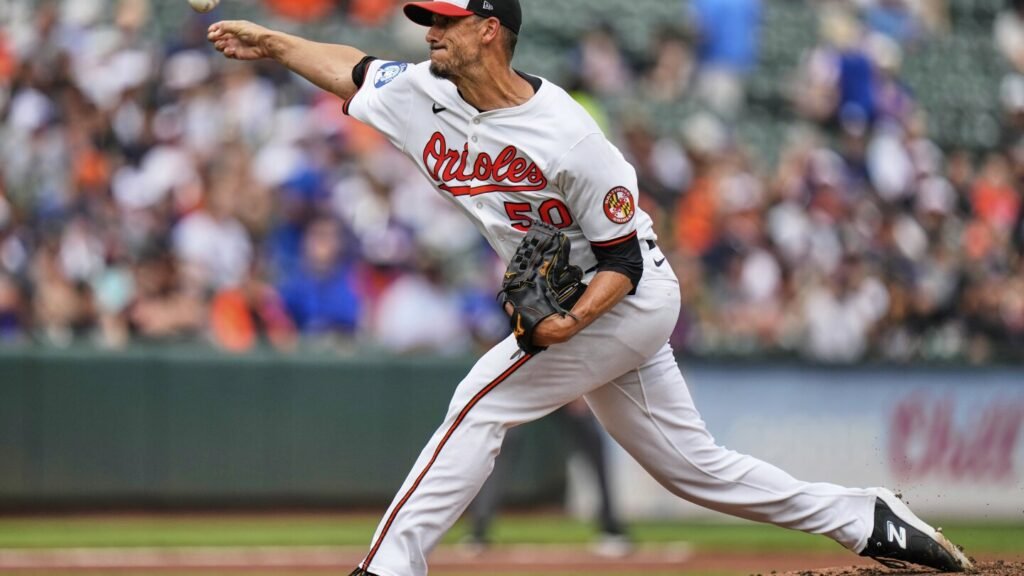ATLANTA (news agencies) — Curveballs have been thrown a curve by a modern game valuing velocity over variety, disappearing from the major leagues by more than 20,000 annually.
The Athletics have thrown curves on just 2.5% of pitches this season. The overall big league figure dropped from 10.7% in 2019 to 8.1% last year, the lowest since MLB starting tracking in 2008, before rising slightly to 8.5% this season.
There were 22,962 fewer curveballs in 2024 than five years earlier.
“You don’t really see a lot of people throwing 12-6 curveballs anymore,” Tampa Bay pitcher Shane Baz said. “They’d rather have a hard cutter/slider. It’s a lot easier for guys to throw a sweeper than it is a 12-6 curveball.”
Baz’s 28.1% is seventh in curveball use among those who have thrown at least 1,000 pitches this season.
Baltimore’s Charlie Morton, first at 39%, learned to throw a hook from his dad.
“He was reading some article or maybe he was reading some pitching book,” Baltimore’s 41-year-old right-hander said. “You basically throw it like you’re re-throwing a knife.”
Hall of Famer Candy Cummings, a 145-game winner, is credited with inventing the curveball in 1863 when he was 14, discovering the movement when he threw sea shells into the Atlantic Ocean. Some attribute the curve to amateur pitcher Fred Goldsmith in 1870.
With an average velocity of 80.2 mph, curves are the slowest and loopiest of breaking pitches, often disrupting the timing of batters set for smoke. The phrase “thrown a curveball” has become part of the English language, much like “screwball,” more a phrase than a pitch these days.
Sandy Koufax, Nolan Ryan and Clayton Kershaw were among the consummate curveballers, bamboozling batters as balls they gave up on dropped like hang gliders into the strike zone.
“It’s become an industry of throwing over pitching,” New York Yankees senior adviser Omar Minaya said. “When you pitch, you use different pitches. What we’re seeing in the industry as a whole, especially with showcases, is people are looking more at velocity than pitchability — as a scout, I said that unfortunately.”
Former pitcher Dallas Braden, now a broadcaster, longs for those days of deception.
“You almost sympathize with the hitter in the moment because you’re like: Damn, I couldn’t have hit that. He couldn’t hit that. Nobody could have hit that,” Braden said. “The eephus is now almost like as close as we get, when a position player is on the mound, to an aesthetically pleasing pitch like that, just the visual presentation of the pitch starting in the clouds and ending up at the ankles.”
Nike’s “Chicks Dig the Long Ball” commercial defined baseball in the Steroids Era. These days the slogan might as well be: “Velo Rules!” There were just 214 pitches of 100 mph or more in 2008. There were a record 3,880 two years ago and this year is on track for 3,252.
In tandem, starting pitcher use has dropped. Starters have averaged just under 5 1/3 innings this season, down from 6 1/3 innings in the 1980s. Their pitch count averages 85.7, down from 97 in 2010
